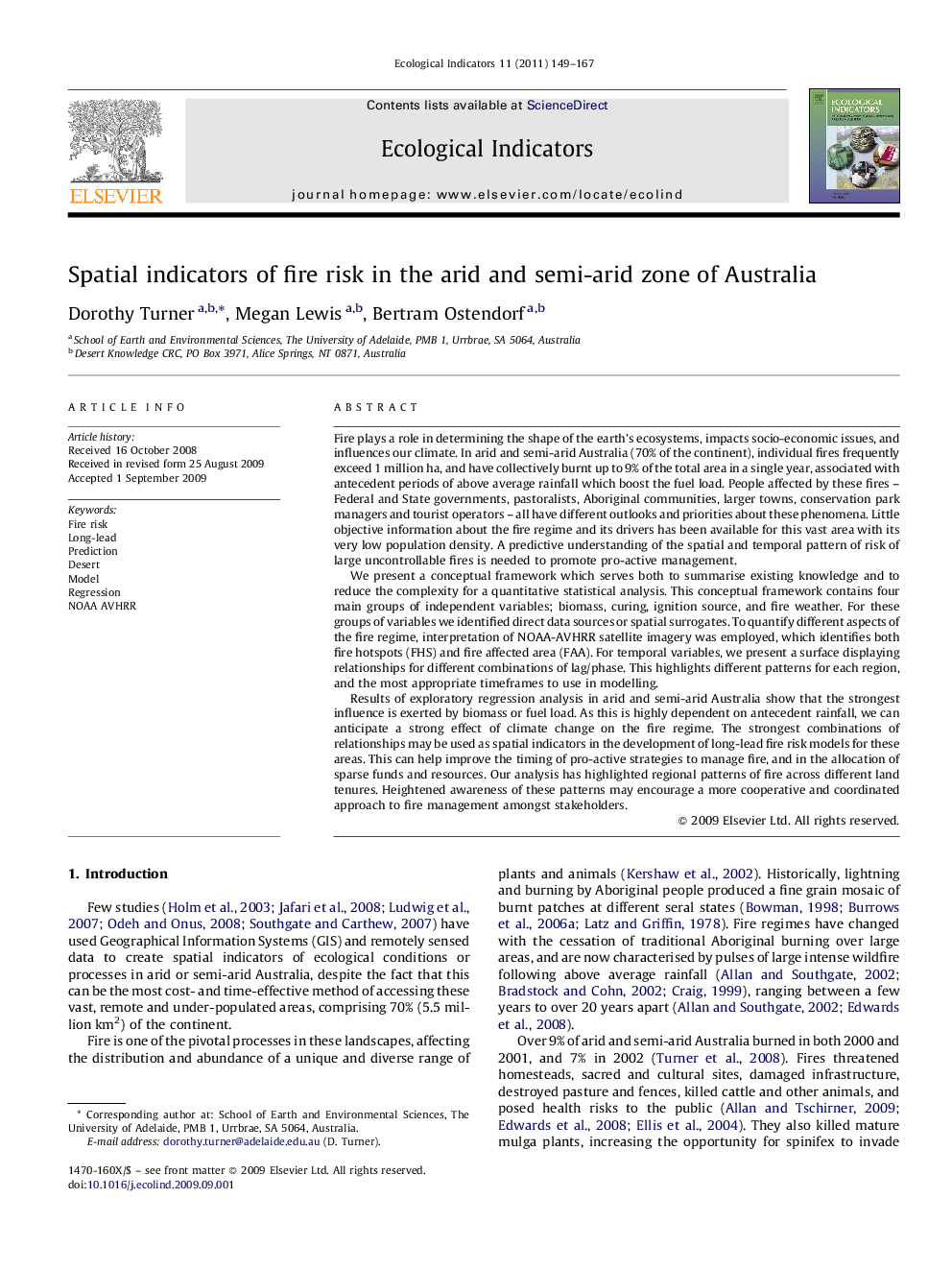| کد مقاله | کد نشریه | سال انتشار | مقاله انگلیسی | نسخه تمام متن |
|---|---|---|---|---|
| 4374188 | 1303164 | 2011 | 19 صفحه PDF | دانلود رایگان |

Fire plays a role in determining the shape of the earth's ecosystems, impacts socio-economic issues, and influences our climate. In arid and semi-arid Australia (70% of the continent), individual fires frequently exceed 1 million ha, and have collectively burnt up to 9% of the total area in a single year, associated with antecedent periods of above average rainfall which boost the fuel load. People affected by these fires – Federal and State governments, pastoralists, Aboriginal communities, larger towns, conservation park managers and tourist operators – all have different outlooks and priorities about these phenomena. Little objective information about the fire regime and its drivers has been available for this vast area with its very low population density. A predictive understanding of the spatial and temporal pattern of risk of large uncontrollable fires is needed to promote pro-active management.We present a conceptual framework which serves both to summarise existing knowledge and to reduce the complexity for a quantitative statistical analysis. This conceptual framework contains four main groups of independent variables; biomass, curing, ignition source, and fire weather. For these groups of variables we identified direct data sources or spatial surrogates. To quantify different aspects of the fire regime, interpretation of NOAA-AVHRR satellite imagery was employed, which identifies both fire hotspots (FHS) and fire affected area (FAA). For temporal variables, we present a surface displaying relationships for different combinations of lag/phase. This highlights different patterns for each region, and the most appropriate timeframes to use in modelling.Results of exploratory regression analysis in arid and semi-arid Australia show that the strongest influence is exerted by biomass or fuel load. As this is highly dependent on antecedent rainfall, we can anticipate a strong effect of climate change on the fire regime. The strongest combinations of relationships may be used as spatial indicators in the development of long-lead fire risk models for these areas. This can help improve the timing of pro-active strategies to manage fire, and in the allocation of sparse funds and resources. Our analysis has highlighted regional patterns of fire across different land tenures. Heightened awareness of these patterns may encourage a more cooperative and coordinated approach to fire management amongst stakeholders.
Journal: Ecological Indicators - Volume 11, Issue 1, January 2011, Pages 149–167